
What’s the Diagnosis – Case 179 1

What’s the Diagnosis – Case 179 2
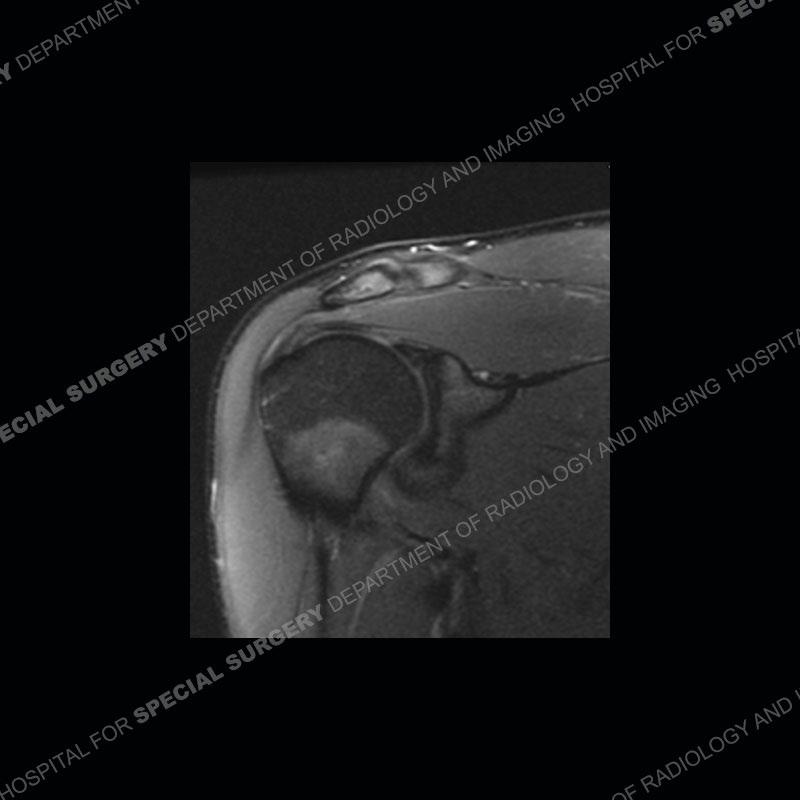
What’s the Diagnosis – Case 179 3

What’s the Diagnosis – Case 179 4

What’s the Diagnosis – Case 179 5

What’s the Diagnosis – Case 179 6

What’s the Diagnosis – Case 179 7

What’s the Diagnosis – Case 179 8
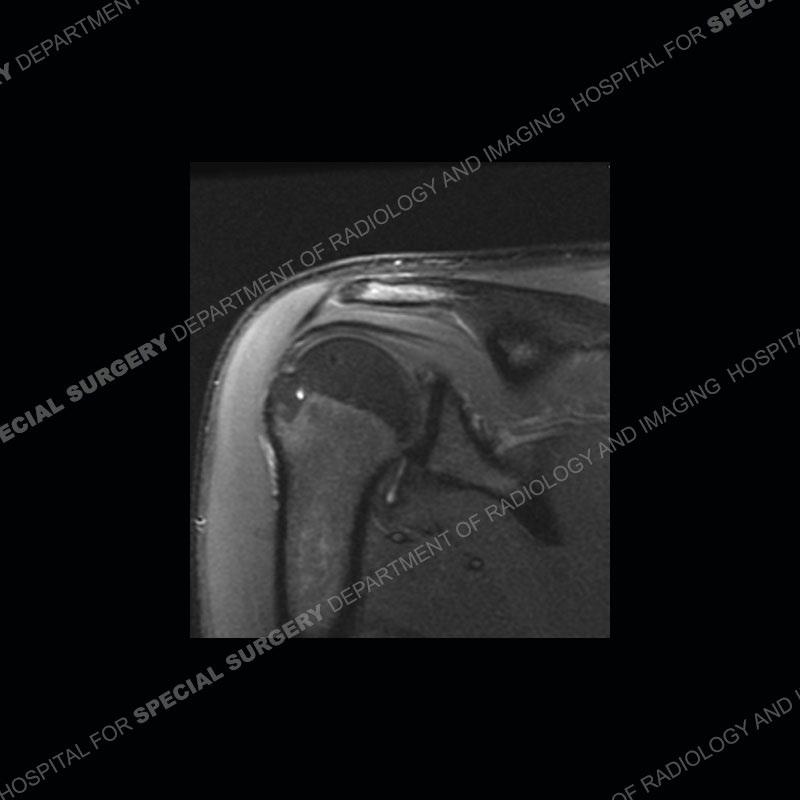
What’s the Diagnosis – Case 179 9

What’s the Diagnosis – Case 179 10

What’s the Diagnosis – Case 179 11
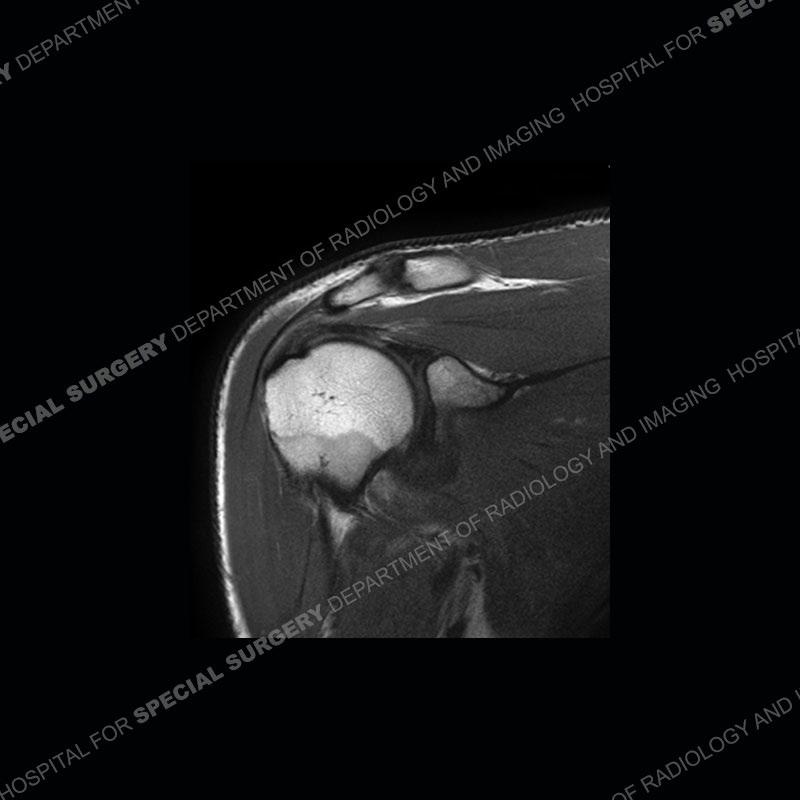
What’s the Diagnosis – Case 179 12
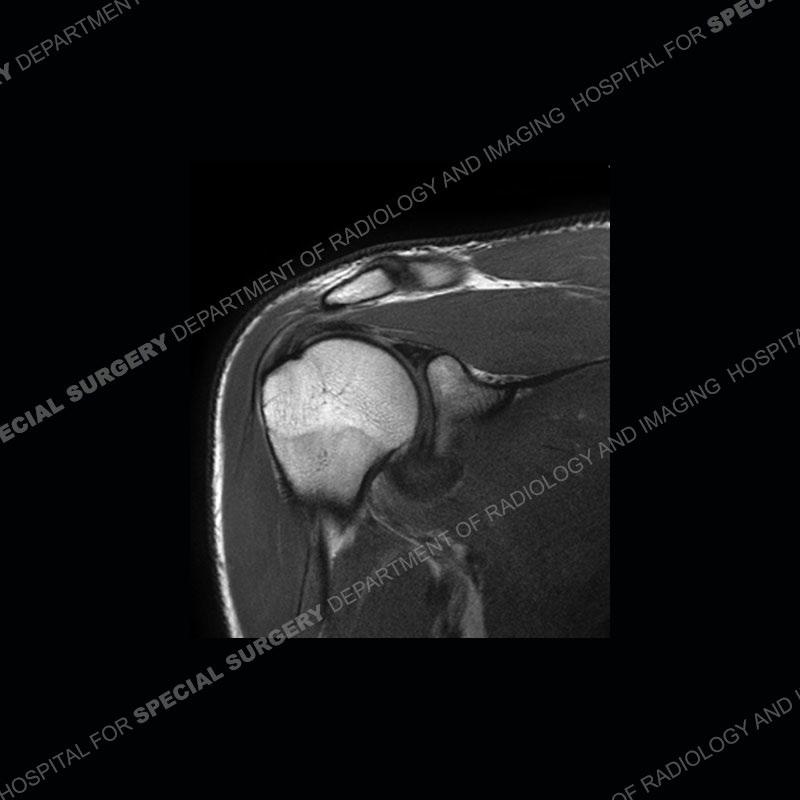
What’s the Diagnosis – Case 179 13

What’s the Diagnosis – Case 179 14

What’s the Diagnosis – Case 179 15

What’s the Diagnosis – Case 179 16

What’s the Diagnosis – Case 179 17

What’s the Diagnosis – Case 179 18

What’s the Diagnosis – Case 179 19

What’s the Diagnosis – Case 179 20
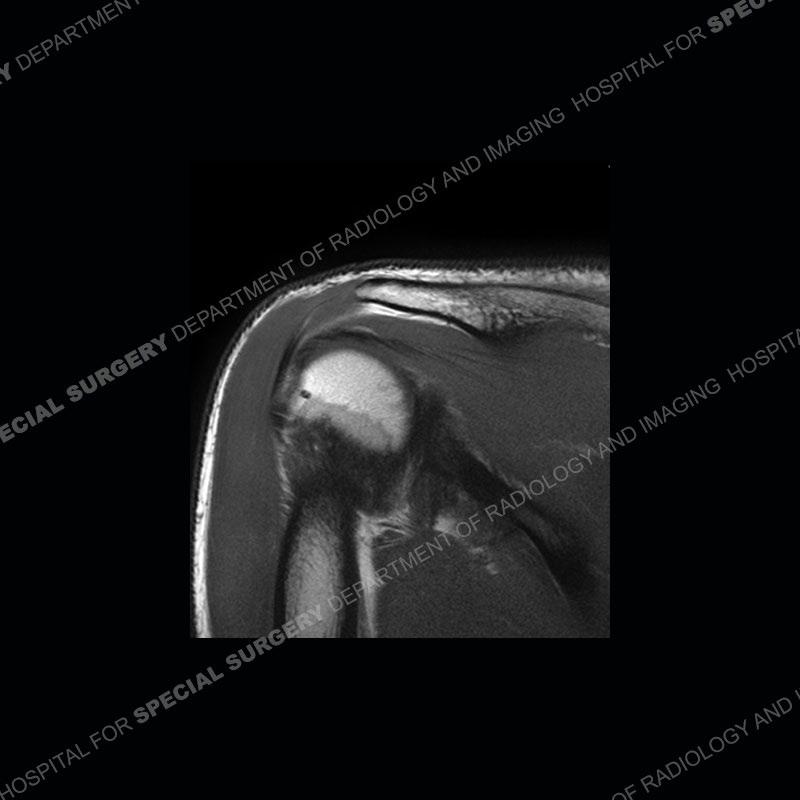
What’s the Diagnosis – Case 179 21

What’s the Diagnosis – Case 179 22
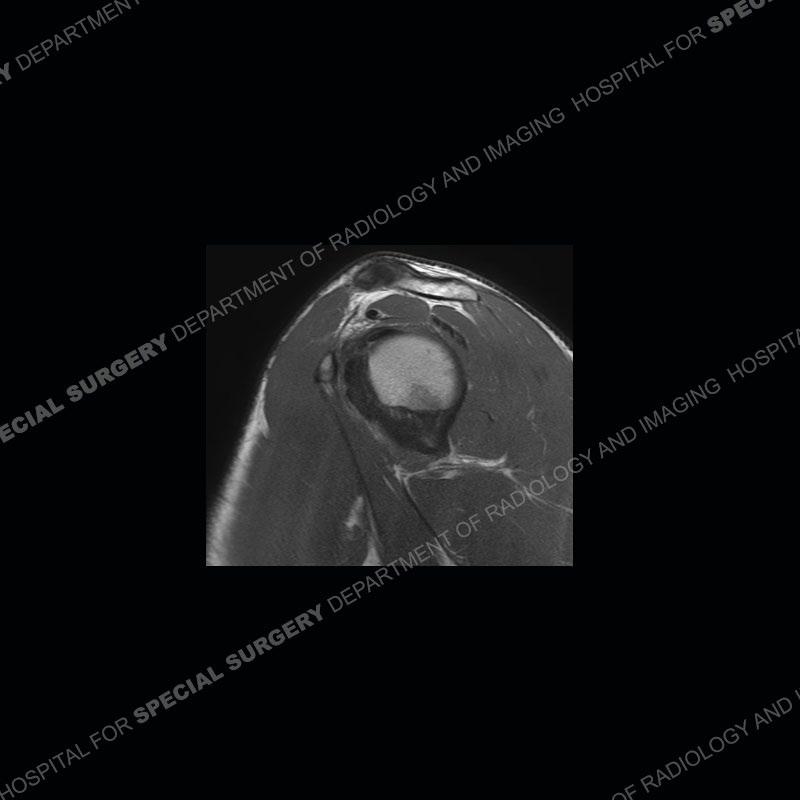
What’s the Diagnosis – Case 179 23

What’s the Diagnosis – Case 179 24

What’s the Diagnosis – Case 179 25

What’s the Diagnosis – Case 179 26

What’s the Diagnosis – Case 179 27

What’s the Diagnosis – Case 179 28

What’s the Diagnosis – Case 179 29

What’s the Diagnosis – Case 179 30

What’s the Diagnosis – Case 179 31

What’s the Diagnosis – Case 179 32

What’s the Diagnosis – Case 179 33

What’s the Diagnosis – Case 179 34

What’s the Diagnosis – Case 179 35

What’s the Diagnosis – Case 179 36
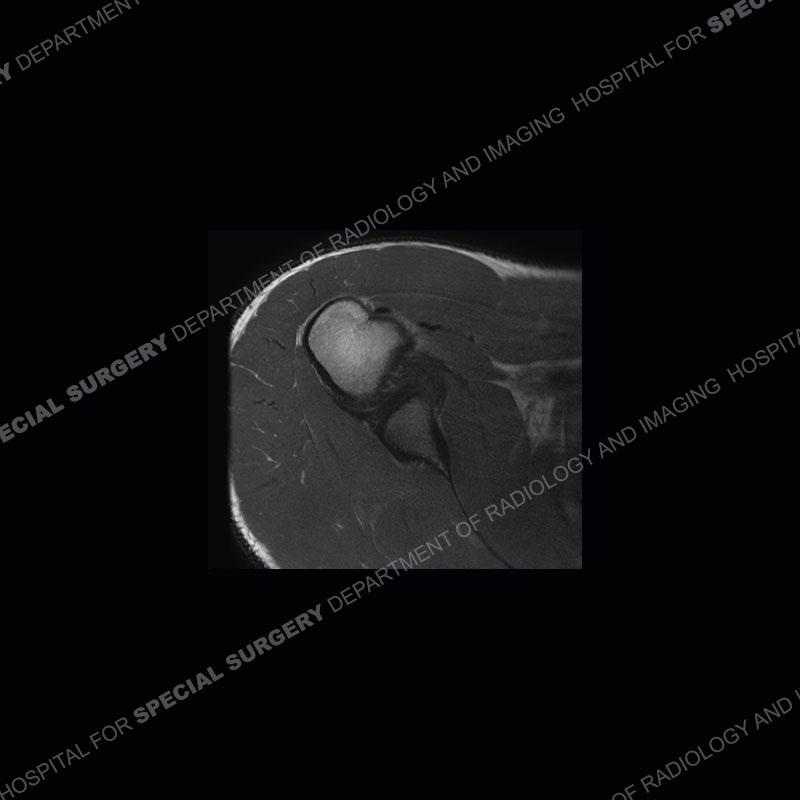
What’s the Diagnosis – Case 179 37
Findings
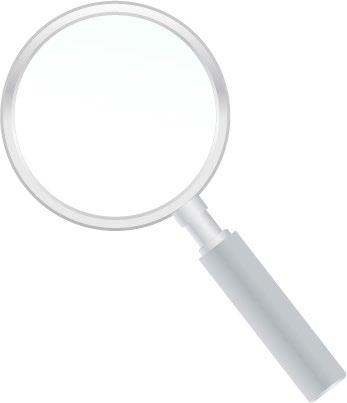
The radiographs do not add any particular contributory findings. On the MRI, seen are cystic changes of the posterior superior greater tuberosity, a thickening of the posterior capsule with osseous prominence of the posterior glenoid, tearing of the superior labrum propagating posteriorly (SLAP tear), and a marked thickening of the anterior capsule extending to the IGHL. Noted is that there is no rotator cuff tear identified.
The somewhat high signal about the AC joint was thought to relate to skeletal immaturity and red marrow. No pathologic process was identified at this location.
What’s the Diagnosis – Case 179
38

What’s the Diagnosis – Case 179 39
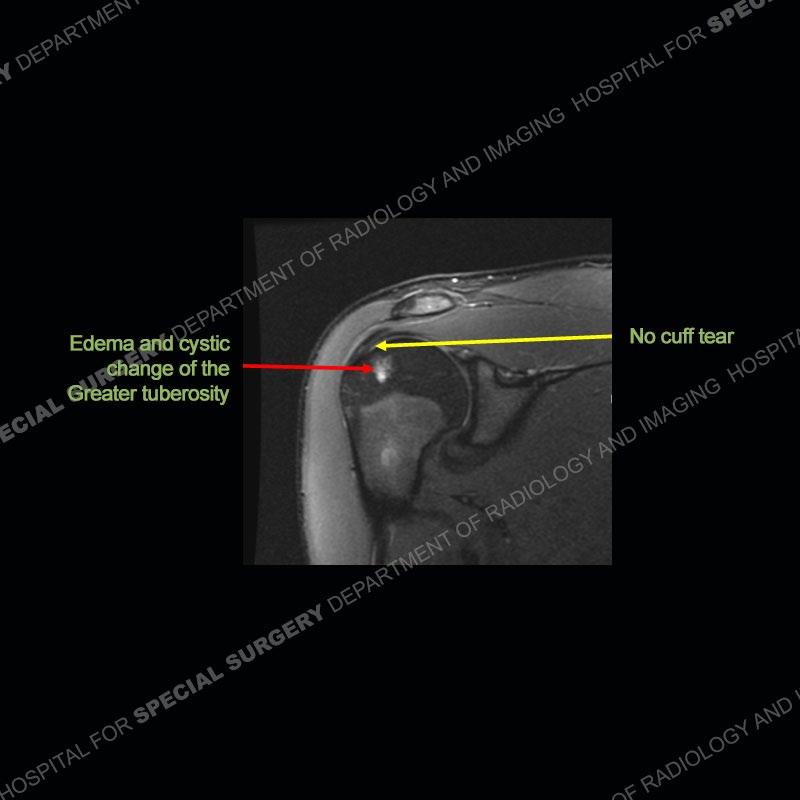
What’s the Diagnosis – Case 179 40

What’s the Diagnosis – Case 179 41

What’s the Diagnosis – Case 179 42
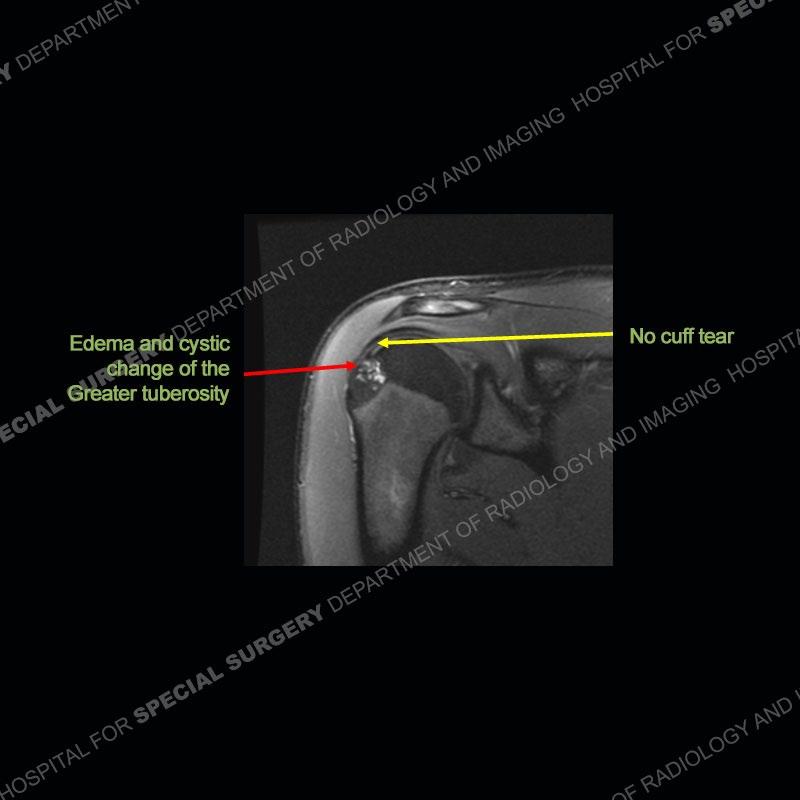
What’s the Diagnosis – Case 179 43

What’s the Diagnosis – Case 179 44
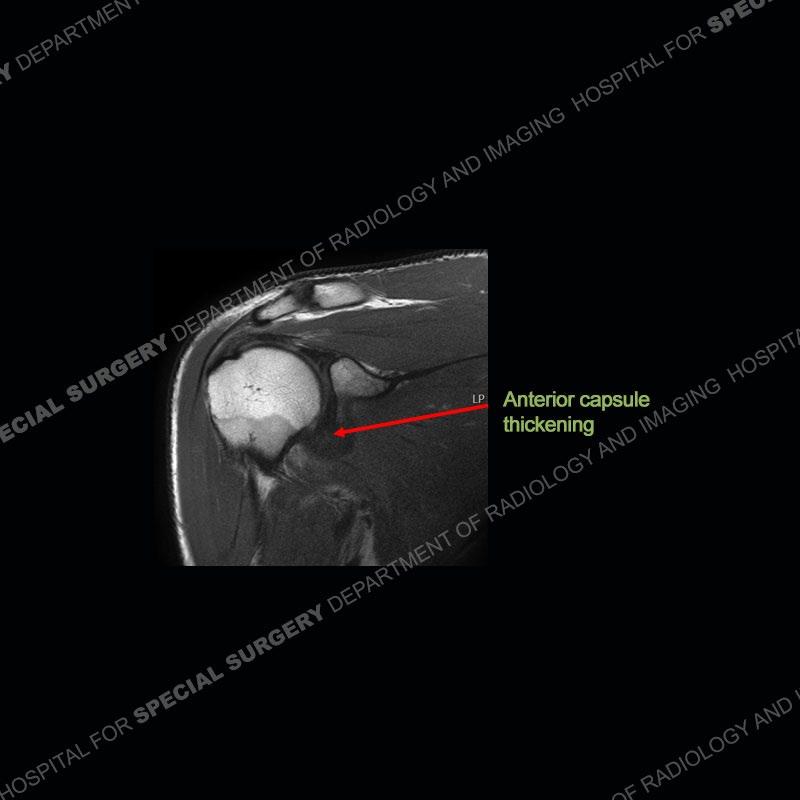
What’s the Diagnosis – Case 179 45

What’s the Diagnosis – Case 179 46

What’s the Diagnosis – Case 179 47

What’s the Diagnosis – Case 179 48

What’s the Diagnosis – Case 179 49
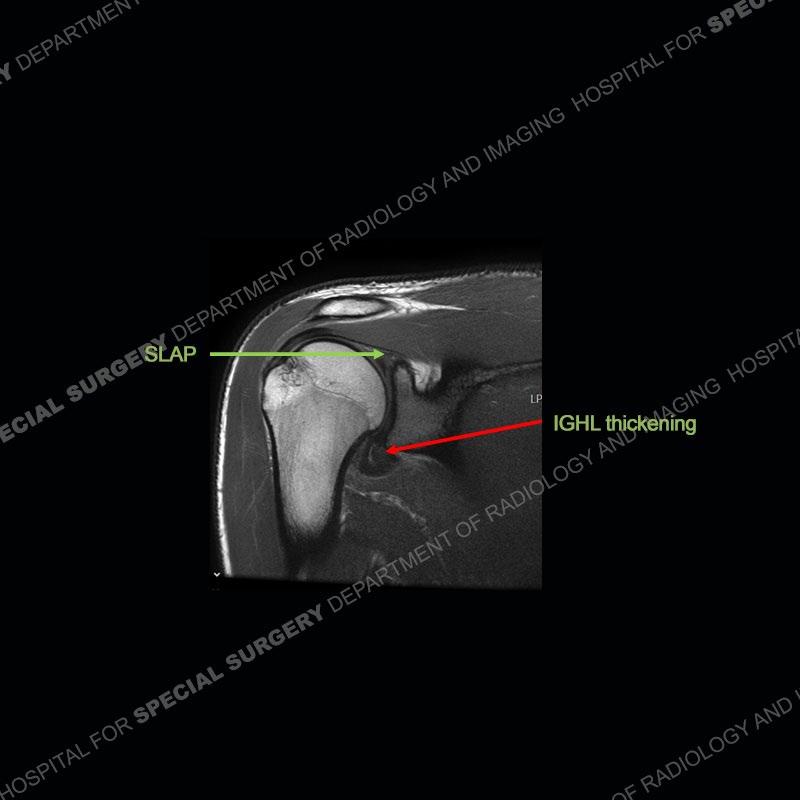
What’s the Diagnosis – Case 179 50

What’s the Diagnosis – Case 179 51

What’s the Diagnosis – Case 179 52

What’s the Diagnosis – Case 179 53
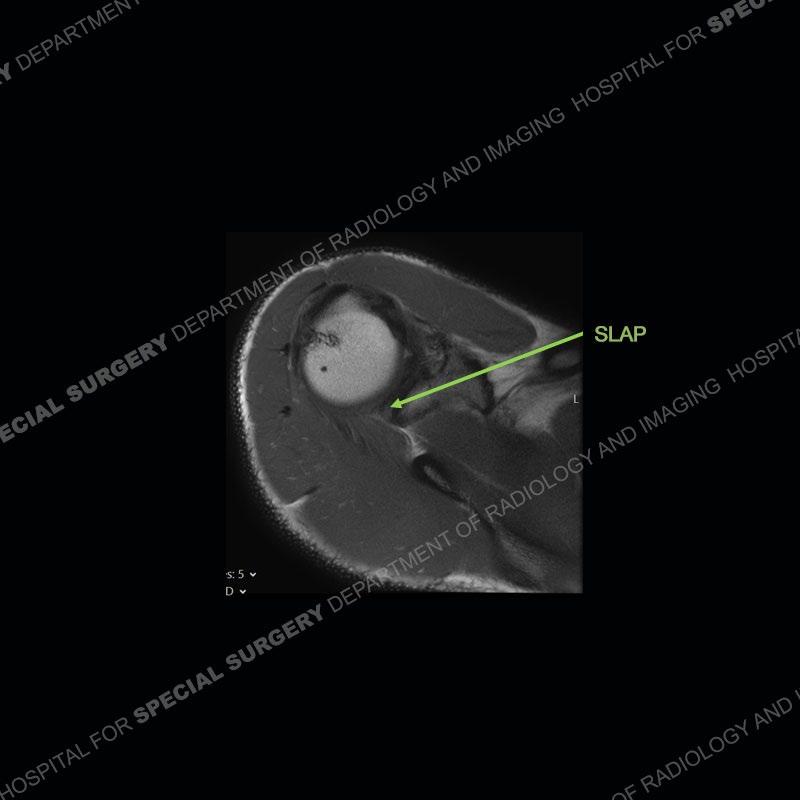
What’s the Diagnosis – Case 179 54

What’s the Diagnosis – Case 179 55

What’s the Diagnosis – Case 179 56

What’s the Diagnosis – Case 179 57

What’s the Diagnosis – Case 179 58

What’s the Diagnosis – Case 179 59
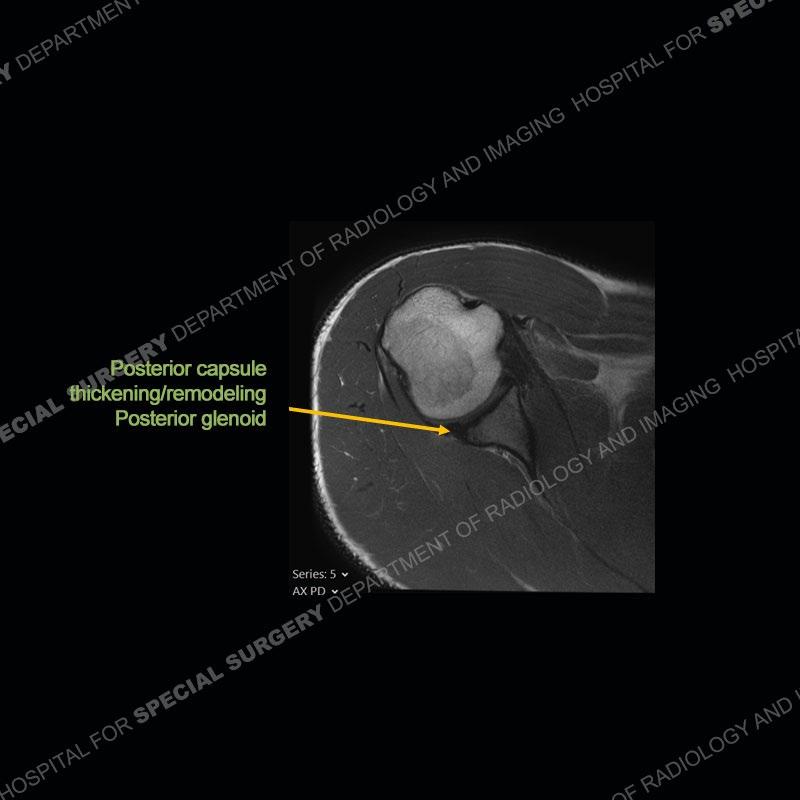
What’s the Diagnosis – Case 179 60
Diagnosis: Thrower’s Shoulder
An extremely complicated subject which has yet to be completely flushed out. The primary event to most is the posterior inferior capsular contracture which leads to decreased glenohumeral internal rotation or GIRD. This can then further lead to the development of a SLAP tear and particularly a posterior peelback process though to be related to the torsional forces placed on the superior labrum. This then propagates to a tear typically at the junction of the supraspinatus and infraspinatus at the inferior articular surface (not seen in this case) and then ultimately anterior capsular failure and instability.
The concept of internal impingement is now generally accepted to be a normal physiologic motion in the abducted external rotation position. As such, cysts are frequently found about the greater tuberosity. However, when excessive external rotation occurs, as it does in pitchers, the cysts and edema of the greater tuberosity can become prominent. Whether or not these findings of themselves are symptomatic is unknow. Most tend to believe that in this hyper-external rotation environment, the rotator cuff becomes impinged upon leading to an articular surface tear at the junction of the supraspinatus and infraspinatus. Most feel that this is the pain generator in this situation.

What’s the Diagnosis – Case 179
61
The posterior capsular thickening and bony remodeling of the posterior glenoid can be seen very early on (reported as early as 8 to 10 years of age). The thickened posterior capsule may ossify precipitating a Bennett lesion which at times may be symptomatic of in itself. The anterior capsule is said in many older, elite level throwers to become patulous with a pseudo laxity. Although not well described in the literature, our anecdotal experience is that the anterior capsule and IGHL often look thickened in the neutral position. It may be that in an ABER position the capsule is patulous, and that it is just redundant in nature in the neutral position.
It is imperative to understand that many of the findings in the thrower’s shoulder are expected and adaptive. As such, discerning the cause of pain in the thrower’s shoulder may be difficult. This has therefore made the treatment of the thrower’s shoulder extremely difficult and a still very contested topic.

What’s the Diagnosis – Case 179
Continued:
62
Comparison Case
8 year old with pain with throwing. This case is utilized to demonstrate how early the bony remodeling of the glenoid occurs. There are already the adaptive changes of the posterior glenoid.

What’s the Diagnosis – Case 179
63
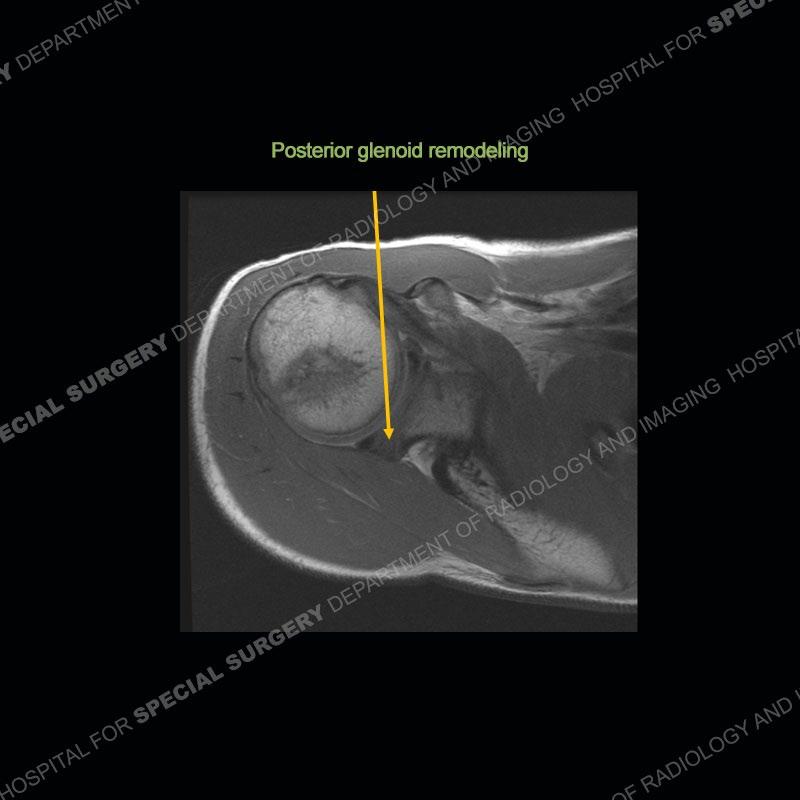
What’s the Diagnosis – Case 179 64

What’s the Diagnosis – Case 179 65

What’s the Diagnosis – Case 179 66

What’s the Diagnosis – Case 179 67
References
The Thrower’s Shoulder. Medina, Giovanna MD, PhD, Bartolozzi, Arthur R. III MD, Spencer, Jacob A. DO, Morgan, Craig MD. JBJS Reviews
March 2022, Volume 10 (3) Copyright © 2022 by The Journal of Bone and Joint Surgery, Incorporated DOI: 10.2106/JBJS.RVW.21.00194 ISSN: 23299185 eISSN: 2329-9185.
Thrower's Shoulder: An Approach to MR Imaging Interpretation. Faysal
Altahawi MD, Joshua M. Polster MD. Magnetic Resonance Imaging Clinics of North America, 2020-05-01, Volume 28, Issue 2, Pages 243-255, Copyright ©
2019 Elsevier Inc.
The Thrower's Shoulder. Gelber, Jonathan D. MD, MS, Soloff, Lonnie DPT, PT, ATC, Schickendantz, Mark S. MD. Journal of the American Academy of Orthopaedic Surgeons. March 15, 2018, Volume 26 (6), p 204–213 Copyright
© 2018. DOI: 10.5435/JAAOS-D-15-00585 ISSN: 1067-151X, 1940-5480
eISSN: 1940-5480

What’s the Diagnosis – Case 179
68


































































